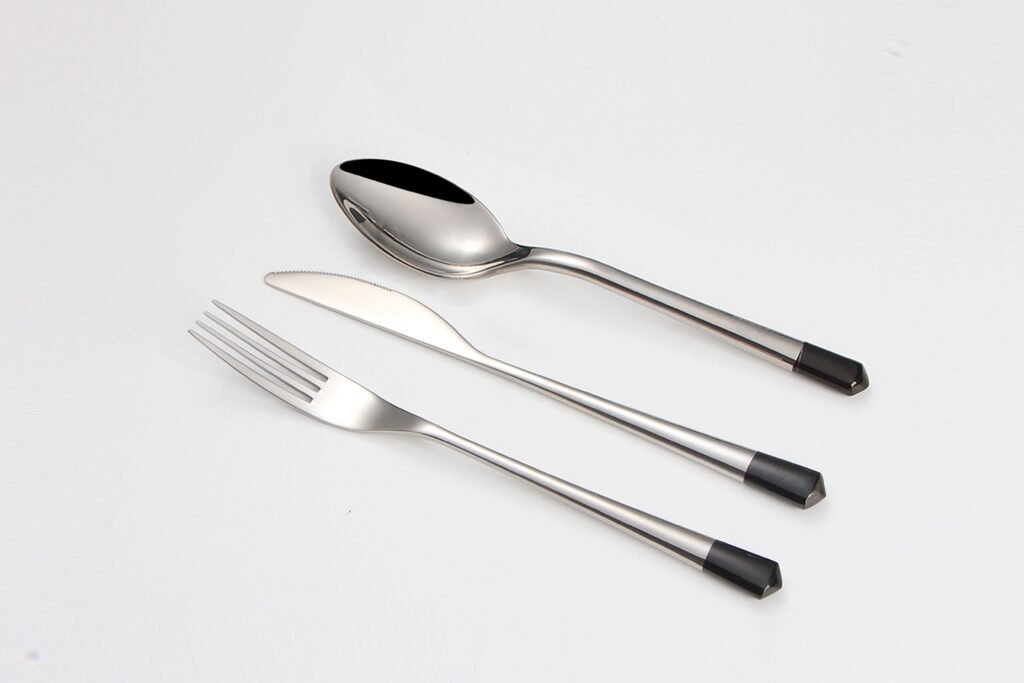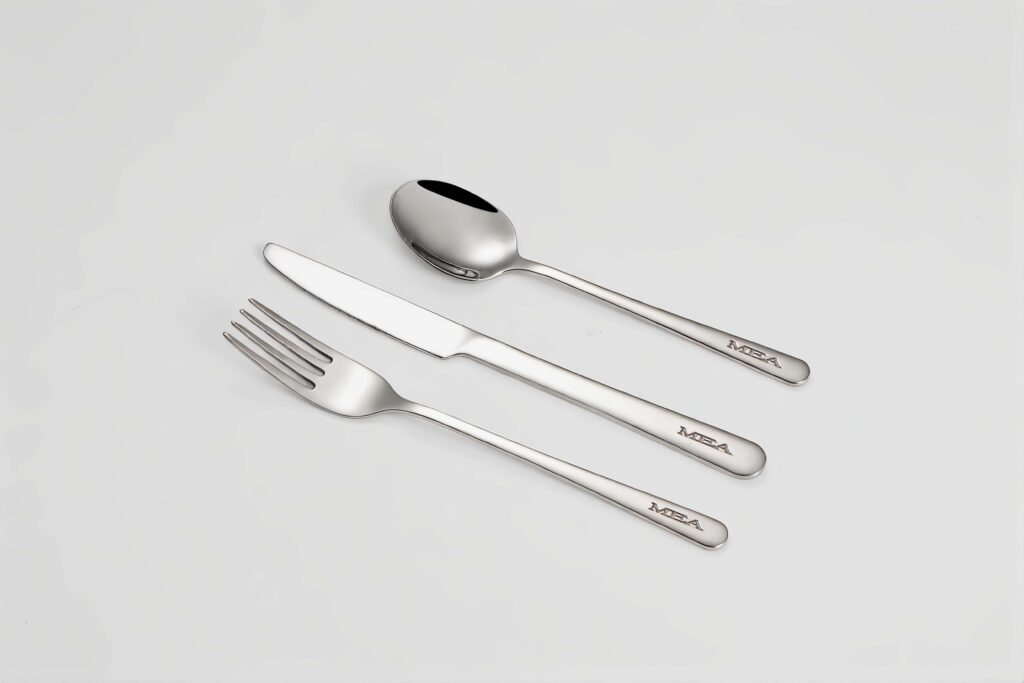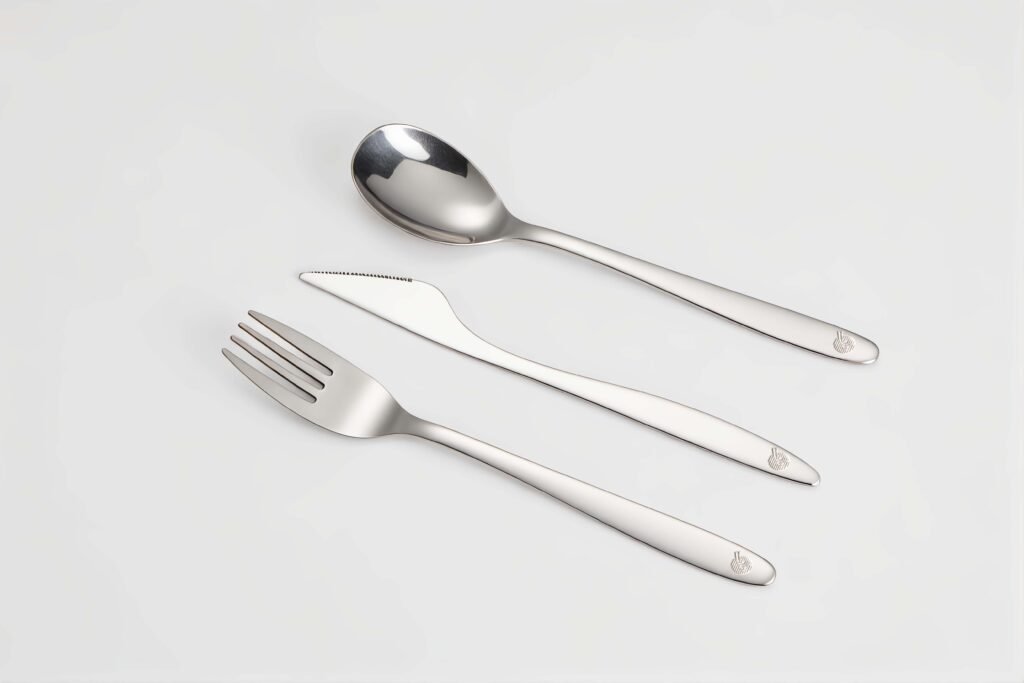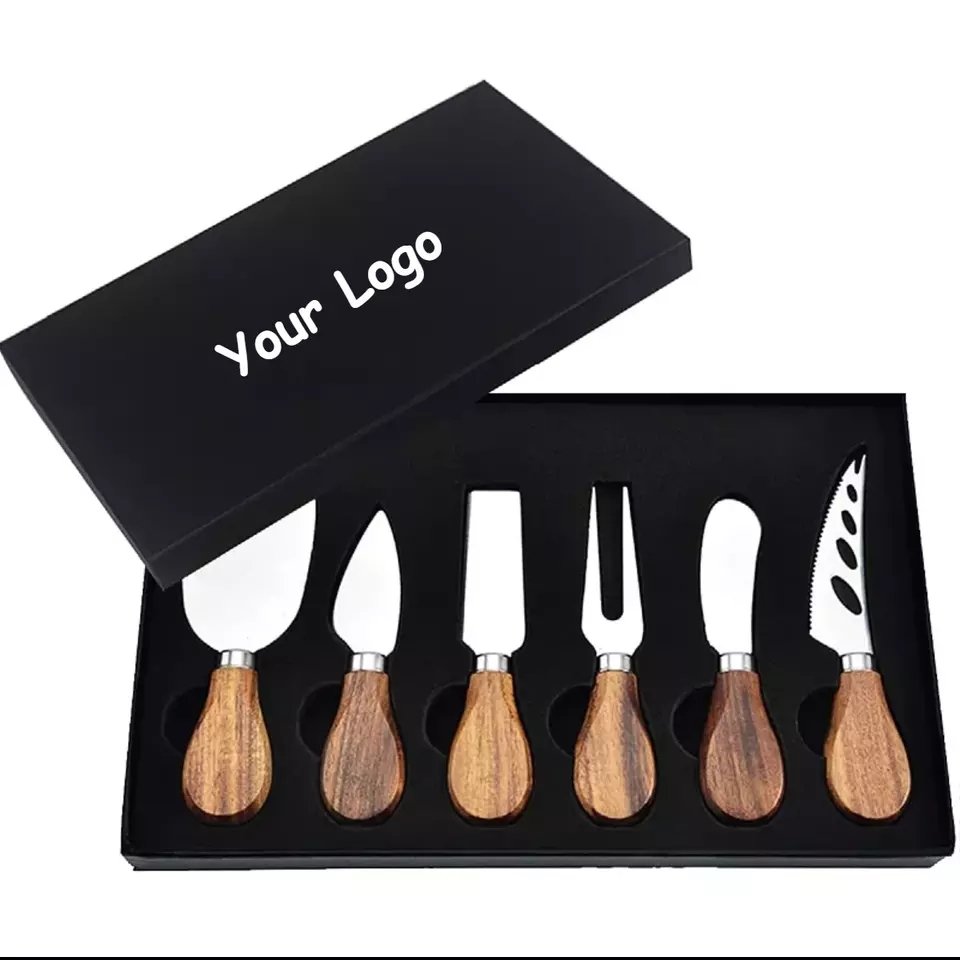Tired of customer complaints about flimsy airline cutlery? Poorly designed cutlery can undermine passenger experience and brand image, costing airlines their reputation.
Selecting the right airline cutlery manufacturer ensures quality, enhances passenger satisfaction, meets international safety standards, and boosts brand image, positively impacting airline reviews and profitability.
Choosing a manufacturer isn’t just about pricing; it’s about finding a partner that understands airline-specific needs and standards. Let’s explore deeper together.
Table of Contents
How Do You Identify a Reliable Airline Cutlery Manufacturer?
Ever had your airline’s image compromised by inconsistent cutlery quality? Poor-quality suppliers can affect customer satisfaction and incur unnecessary operational costs.
A reliable airline cutlery manufacturer has proven experience, maintains consistent product quality, adheres strictly to aviation safety standards, and offers robust after-sales support.
Criteria for Evaluating Manufacturers
When evaluating manufacturers, I recommend focusing on three core areas: experience, quality assurance, and support.
Manufacturer Experience
Choose manufacturers experienced specifically in airline cutlery. This isn’t regular kitchen cutlery; aviation standards differ significantly.
| Criterion | Explanation | Importance |
|---|---|---|
| Airline Portfolio | History of working with reputable airlines | High |
| Aviation Standards | Familiarity with aviation safety and quality standards | High |
| Production Volume | Capability to handle large-scale production demands | Medium |
My personal experience working with international airlines such as British Airways and Qatar Airways showed that experienced suppliers understand aviation-specific demands, simplifying project management and reducing risks.
Quality Assurance Practices
Ensuring consistent quality is non-negotiable. Quality assurance should include:
| Criterion | Explanation | Importance |
|---|---|---|
| Certifications | Compliance with FDA, ISO, aviation-specific standards | High |
| Material Traceability | Documentation of raw material sources | High |
| Regular Quality Audits | Scheduled inspections and quality tests | High |
A transparent quality control process reduces defects, enhances passenger safety, and protects your airline’s reputation.
After-Sales Support and Responsiveness
Cutlery defects or shortages can occur unexpectedly, so strong after-sales support is crucial.
| Criterion | Explanation | Importance |
|---|---|---|
| Response Time | How quickly the manufacturer addresses issues | High |
| Spare Parts Policy | Availability and ease of acquiring replacements | Medium |
| Communication | Clarity, regular updates, problem-solving capabilities | High |
Manufacturers who respond quickly help airlines maintain smooth operations, significantly reducing downtime and customer dissatisfaction.

What Materials Should You Choose for Airline Cutlery?
Do passengers complain about heavy, awkward cutlery on your flights? Wrong material choices can impact usability, hygiene, and overall passenger comfort.
Ideal materials for airline cutlery include stainless steel, lightweight aluminum alloys, and eco-friendly alternatives such as bamboo, each balancing durability, weight, hygiene, and passenger comfort.
Pros and Cons of Cutlery Materials
Here’s an in-depth look at popular airline cutlery materials:
Stainless Steel
| Advantages | Disadvantages | Best Usage Scenario |
|---|---|---|
| Durable, corrosion-resistant | Heavier, increases flight weight | Premium cabins, full-service airlines |
| Hygienic, easy to clean | Higher initial cost | Long-haul flights |
Stainless steel offers prestige and durability, commonly chosen by airlines prioritizing premium passenger experiences, like British Airways’ First Class cabins.
Lightweight Aluminum Alloys
| Advantages | Disadvantages | Best Usage Scenario |
|---|---|---|
| Lightweight, fuel-efficient | Slightly less durable | Economy class, budget airlines |
| Cost-effective and recyclable | Limited luxury feel | Short to medium-haul flights |
Many airlines, including Alaska Airlines, use aluminum alloys to balance cost, weight, and passenger comfort effectively.
Eco-friendly Alternatives (Bamboo, PLA)
| Advantages | Disadvantages | Best Usage Scenario |
|---|---|---|
| Biodegradable, environmentally friendly | Lower durability | Eco-conscious flights |
| Lightweight, enhances brand sustainability | Limited reusability | Short-haul or charter flights |
Eco-friendly materials align with sustainability goals. Companies like Corsair increasingly adopt these materials to boost their environmental credibility.

How Does Customization Impact Airline Branding?
Feel your airline is indistinct from competitors? Standardized cutlery offers no differentiation and does little for passenger recall.
Customized airline cutlery strengthens branding by enhancing passenger experiences, creating memorable impressions, and differentiating the airline visually and tactilely from competitors.
Key Customization Options and Their Impact
Let’s explore customization in detail:
Branding Through Design
Custom cutlery shapes and ergonomic designs create distinctive passenger experiences.
| Customization | Impact on Branding | Example Airline Use |
|---|---|---|
| Unique shapes | High recognition, passenger recall | Qatar Airways’ distinctive spoon designs |
| Logo integration | Increased brand visibility | British Airways’ engraved cutlery |
Distinctive shapes become a memorable aspect of passenger experience, fostering brand loyalty.
Material Finishes and Textures
Different finishes communicate brand values clearly.
| Finish Type | Branding Message | Suitable Airline Type |
|---|---|---|
| High-polish finish | Luxury and premium feel | Premium airlines |
| Matte finish | Modern, practical | Budget to mid-range airlines |
| Brushed finish | Sophisticated, understated elegance | Business-class segments |
Material textures help airlines convey their identity explicitly. Airlines like Royal Brunei use subtle matte finishes, enhancing a refined yet practical image.
Color and Branding Elements
Incorporating airline colors or thematic patterns enhances brand recall.
| Element | Branding Benefits | Implementation Tips |
|---|---|---|
| Airline colors | Strengthens brand identity | Match cutlery colors with airline livery |
| Cultural motifs | Enhances thematic branding | Integrate traditional motifs subtly |
Effective use of branding elements creates emotional connections, enhancing overall passenger satisfaction.
Choosing the right airline cutlery manufacturer elevates passenger experience, reinforces brand identity, and ensures operational efficiency, crucial for airline success and reputation growth.

How Do Airlines Balance Cost and Quality in Their Cutlery Choices?
Every airline wants good-looking, functional cutlery—but with tight margins, affordability is key. Choosing the right supplier, material, and design makes all the difference.
To balance cost and quality, airlines segment cutlery by cabin class, use mixed-material strategies, and partner with experienced manufacturers who can optimize production efficiency and meet aviation standards.
Why Cost and Quality Are Always in Conflict
Airline catering budgets are shrinking, especially in economy class. But customers expect at least a minimum level of dignity when eating. That means no sharp edges, no flimsy forks, and no materials that feel like toys. Here’s how airlines juggle the pressure.
The Three-Part Balancing Act
| Factor | How It Affects Cost | How It Affects Quality | My Suggestion |
|---|---|---|---|
| Material Choice | Metal is pricier than plastic/composite | Stainless steel feels premium | Use metal for business/first class only |
| Production Method | Hand-finishing raises unit cost | Better polish and feel | Use machine polish with smart mold design |
| Supplier Experience | Inexperienced suppliers cause delays, rework | Proven suppliers reduce risk | Work with factories that know aviation |
When we worked with Qatar Airways on their business class cutlery set, they insisted on 18/10 stainless steel. Their budget was strict, but they cared deeply about brand perception. We reduced cost by simplifying the mold structure and finishing process while maintaining that premium weight and shine.
Why Design Efficiency Matters
A complex shape might look good on paper, but it raises tooling costs and creates uneven polish. Instead, we encourage clients to use elegant but streamlined forms that save cost without compromising style.
Can I Take Silverware on an Airplane?
Many passengers wonder if airline cutlery is allowed in their carry-on or personal bag. Regulations vary by country and airport.
Yes, passengers can usually bring metal silverware like forks and spoons in carry-on bags, but knives are typically prohibited regardless of size or brand.
Airport Security Isn’t Always Consistent
I’ve personally tested this with my sample kits. In Frankfurt and Doha, I got through with forks and teaspoons. But in Beijing and Dubai, the same kit got flagged for inspection. It depends not only on the object but also on the officer.
What's Typically Allowed?

| Item | Carry-On | Checked Luggage | Notes |
|---|---|---|---|
| Fork | ✅ | ✅ | Usually allowed, but no sharp tips |
| Spoon | ✅ | ✅ | Always allowed |
| Knife | ❌ | ✅ | Prohibited in carry-on, even butter knives |
| Chopsticks | ✅ | ✅ | Allowed if not sharp or metal-tipped |
Passengers who take cutlery as souvenirs usually don’t get stopped if it’s non-knife. But airlines discourage this behavior, which brings us to the next question…
Is It Okay to Take Airline Cutlery?
It might feel like a harmless keepsake, but taking airline cutlery is technically theft—even if the airline doesn’t chase you down for it.
No, taking airline cutlery is not allowed. It is the airline’s property, and removing it without permission is considered unauthorized removal of company assets.
Why This Is a Real Issue for Airlines
I’ve seen airline clients order 100,000+ units of cutlery for a three-month cycle, only to re-order within weeks due to unexpected losses. Most of these losses happen when passengers “collect” the cutlery. Some airlines have even considered engraving “Property of XYZ Airline” on handles.
How Airlines Try to Prevent Losses
| Strategy | Pros | Cons |
|---|---|---|
| Use of branding | Deters theft | Increases mold complexity |
| Staff training | Encourages tray checks | Not 100% effective |
| Mixed-material cutlery | Less appealing to steal | May affect perception |
As a manufacturer, we sometimes help clients choose materials and designs that still look premium but don’t encourage theft. For example, matte finishes instead of mirror polish, or lighter weight spoons.
What's the Difference Between Silverware and Flatware?
Many people use the terms interchangeably, but they’re not exactly the same thing—especially in the airline industry.
Silverware refers to utensils made of real silver or silver-plated metal, while flatware is a broader term that includes all eating utensils, regardless of material.
Why This Matters in Procurement
In the commercial airline space, we use “flatware” to describe all utensil sets—spoons, forks, knives. But some premium airlines still refer to their business or first class service as “silver service” even if the cutlery isn’t real silver.
Material Comparison
| Term | Typical Materials | Airline Use Case |
|---|---|---|
| Silverware | Sterling silver, plated | Rare, mostly private jets |
| Flatware | Stainless steel, plastic, wood | All commercial airlines |
Most of our airline clients specify “flatware” in their RFPs. But sometimes they write “silverware” by habit. It’s important that both sides are clear during product specification and contract discussions.
What is the Highest Grade Silverware?
Not all stainless steel is equal. If you’re designing cutlery for airline use, choosing the right grade can impact everything—from feel to corrosion resistance to cost.
The highest grade commonly used in cutlery is 18/10 stainless steel, known for its durability, shine, and corrosion resistance due to its nickel content.
Why Grade Matters for Airlines
18/10 steel contains 18% chromium and 10% nickel, offering excellent rust protection and a smooth polish. This makes it ideal for business and first class. However, for economy service, many airlines opt for 18/0 (no nickel) to reduce cost.
Comparison of Steel Grades
| Grade | Composition | Pros | Cons |
|---|---|---|---|
| 18/10 | 18% Cr, 10% Ni | Bright, corrosion-resistant | More expensive |
| 18/8 | 18% Cr, 8% Ni | Slightly less shiny | Still relatively premium |
| 18/0 | 18% Cr, 0% Ni | Budget-friendly | More prone to staining |
We’ve produced all three types, depending on cabin class. Some clients even request mix sets—18/10 for spoons and forks, but 18/0 for butter knives to save cost.

How Do Airline Catering Companies Choose the Right Cutlery Supplier?
Choosing a supplier goes beyond price quotes. Catering companies look for reliability, quality control, and deep understanding of aviation standards.
They choose suppliers with strong production capacity, proven experience with aviation clients, and the ability to meet safety certifications and delivery deadlines.
What Catering Procurement Really Looks For
We’ve worked with many catering companies that service dozens of airlines. They’re under pressure to manage everything from food packaging to waste reduction. Cutlery is just one part of that chain, but it needs to be dependable.
Key Evaluation Criteria
| Factor | Why It Matters | Our Value Proposition |
|---|---|---|
| Experience | Reduces training and communication time | Worked with 12+ international airlines |
| Certification | Food safety and import compliance | Full certification (LFGB, FDA) |
| Mold capability | Impacts design flexibility | In-house mold team |
| Lead time | Catering timelines are tight | Short cycle and quick tooling |
| MOQ and scale | Some airlines need huge quantities | Can scale from 10K to 1M+ sets |
In 2022, we helped a catering supplier in the Middle East switch from three vendors to just one—our factory. Why? We could match the quality of all three at a better lead time and lower cost.
Airline cutlery isn’t just about forks and knives—it reflects the brand, passenger comfort, and behind-the-scenes operations. Each decision is strategic.





